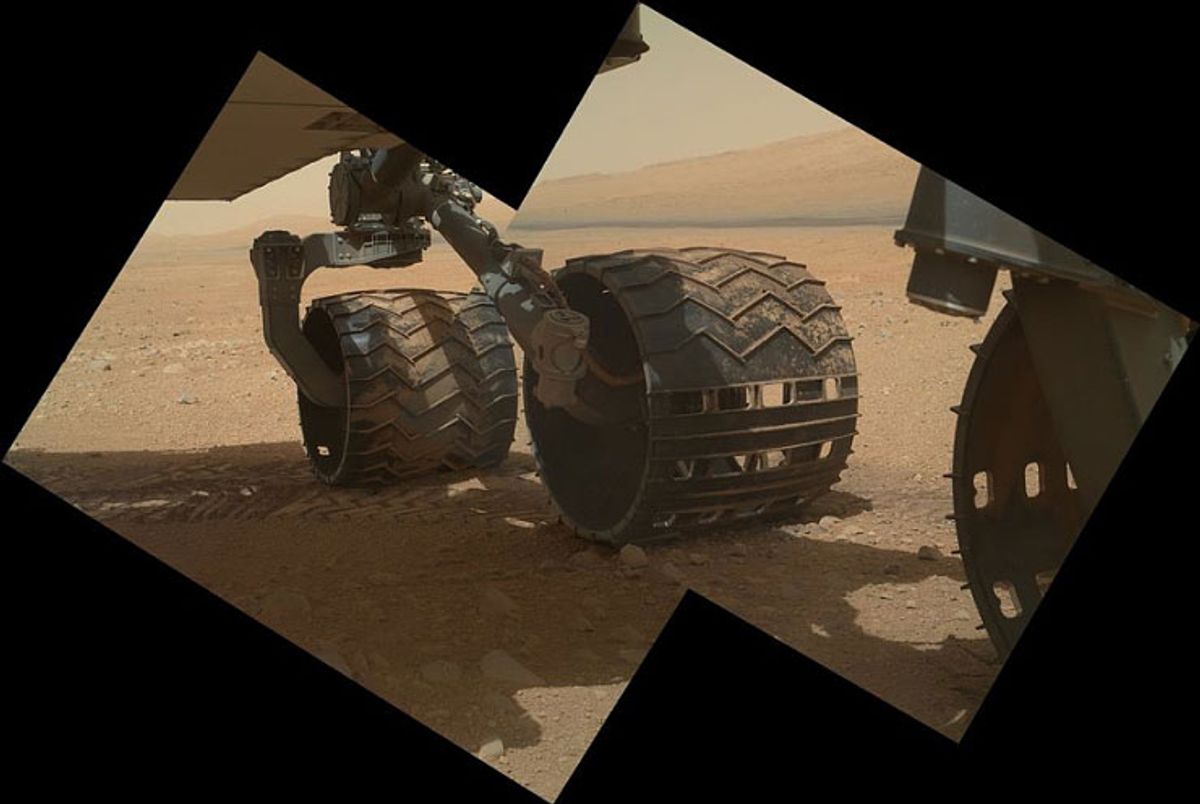It is constantly amazing to me that we have a robot (two robots!) driving around on Mars right now. On MARS. If we were being grumpy about it, however, we might call a robot like Curiosity a (very sophisticated) remote controlled vehicle, since it's "driven" by humans back here on Earth. Only, it isn't anymore, not entirely: on Tuesday, JPL gave Curiosity her head, letting the rover decide where to drive itself.
By "decide," we mean that JPL can now tell Curiosity, "we want you to go over that way and end up at a specific place, but you can figure out for yourself how to get there." To do this, the rover analyzes images from its cameras as its driving to determine which potential routes are safe, and which aren't:
"Curiosity takes several sets of stereo pairs of images, and the rover's computer processes that information to map any geometric hazard or rough terrain," said Mark Maimone, rover mobility engineer and rover driver at NASA's Jet Propulsion Laboratory, Pasadena, Calif. "The rover considers all the paths it could take to get to the designated endpoint for the drive and chooses the best one."
The drive on Tuesday, the mission's 376th Martian day, or "sol," took Curiosity across a depression where ground-surface details had not been visible from the location where the previous drive ended. The drive included about 33 feet (10 meters) of autonomous navigation across hidden ground as part of a day's total drive of about 141 feet (43 meters).
"We could see the area before the dip, and we told the rover where to drive on that part. We could see the ground on the other side, where we designated a point for the rover to end the drive, but Curiosity figured out for herself how to drive the uncharted part in between," said JPL's John Wright, a rover driver.
While this autonomous technique certainly makes Curiosity more efficient (as long as the rover drivers trust it, of course), when we think about the future of the robotic exploration of our solar system and beyond, autonomy is going to play a bigger and bigger role, if for no other reason than the time it takes for instructions to get to the robots becomes impractical. And if we end up getting robotic submarines exploring Europa or a robotic airplane soaring the Martian skies, autonomy is only viable option, so it's great that JPL is trying this out on Curiosity.
Having said all that, if we there's to be any hope of peaceful contact with the Martians (or future colonists), do not give Curiosity autonomous control of her laser cannon.
Via [ JPL ]
Evan Ackerman is a senior editor at IEEE Spectrum. Since 2007, he has written over 6,000 articles on robotics and technology. He has a degree in Martian geology and is excellent at playing bagpipes.



